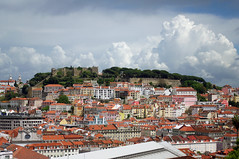Unveiling the Allure of the Desert Art Studio
There’s a unique charm about desert art studios that makes them a captivating destination for art lovers worldwide. Whether it’s the shifting sands of the Sahara or the red expanse of the Australian Outback, these isolated landscapes inspire artists to create profound, captivating works. Unlike more traditional art spaces, desert galleries harness the desolate beauty of their surroundings, resulting in art that is as much about the environment as it is about human expression.
These studio spaces, nestled within the untamed wilderness of the desert, are a haven for artists seeking a refuge from urban chaos. The perpetual silence, broken sporadically by the rustle of desert wind, provides them with the tranquillity needed for deep introspection and creativity. In a desert art studio, one can truly comprehend Georgia O’Keeffe’s assertion that “The landscape of the desert is always changing; the mountains seeming alive in some mystical way.”
Visitors to the desert art studios will often find themselves entranced by the intertwining of art and nature. These studios provide a unique interaction with art that is entirely immersed within the raw desert environment, fostering an intense connection between the viewer, the artist’s work, and the all-encompassing desert landscape. The vast expanse of the desert, with its stark landscapes and eerily beautiful silence, becomes an incredible source of inspiration for artists.
Contemporary desert studios reveal a thorough merging of architectural ingenuity with the desert landscape, whereby the studios themselves can sometimes appear as grand artworks. Artists will frequently use local and natural materials, creating art pieces that look like an extension of the desert itself. Desert art incorporates elements that are deeply rooted in Aboriginal, Bedouin, and Native American cultures, reflecting the rich histories of these desert-dwelling communities within their artwork.
One of the most renowned desert art studios exists within the heart of Australia’s red center: The Tjanpi Desert Weavers. Celebrated globally for their woven fibre art, this collaborative ‘studio’ is comprised of more than 400 Aboriginal women artists from the Central and Western desert regions. The works produced here are not just visually stunning, but also significant – each piece shares pieces of ancient stories, spiritual beliefs, and cultural practices.
One might even argue that despite the remarkable art gallery tours Europe offers – with their rich historical art collections and iconic museums – there’s something incredibly raw and captivating about the simplicity of a desert art studio that renders it equally, if not more, enthralling. Unlike traditional European tours, a visit to a desert studio isn’t simply about observing art; it’s about living, breathing, and experiencing the art in its original, raw, elemental form.
In conclusion, a desert art studio offers a unique intersection of art, culture, and desert ecology, providing a singular experience for art enthusiasts and lovers of nature alike. These studios, often remote and hidden amidst the astonishing desert landscapes, reward those adventurous spirits willing to traverse sand dunes and endure extreme temperatures, with unique art experiences – a stark contrast to the polished marble and ornate gilded frames of traditional European galleries. Their profound simplicity, coupled with their silent, majestic desert surroundings, endows them with an uncanny ability to evoke feelings of awe, wonder, and reflection.
